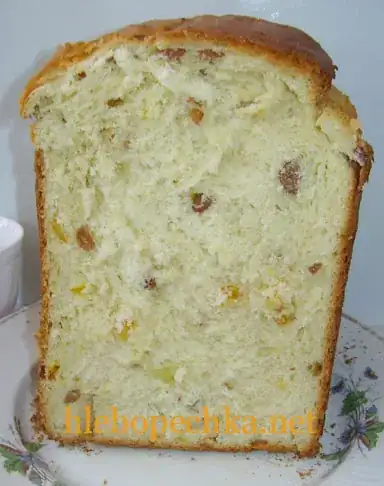Essentially, the exterior crust and the interior evenness are both side effects of the distribution of water.
The Maillard Reaction - the chemical reaction responsible for the brown crust - happens at about 150° C. Generally you're baking at a much higher temperature than this - say 200° C.
The first question one might ask is, why is the crust only on the outside? And the answer is because only the outside gets dry enough; as the small amount of water on the surface evaporates, the temperature is allowed to rise to ambient oven temperature.
The reason it doesn't happen on the inside is precisely the opposite; water boils at 100° C, so as long as there's still water in liquid form (and bread is, to a large extent, water), the temperature can't get any higher than that. The interior of the bread is always regulated at approximately 100° C, and since the baking temperature is uniform, so is the finished product. It's almost like poaching an egg or a piece of meat; no part of it is able to get any hotter than the liquid around it, so the longer you cook it, the more uniform the temperature gets.
If you continued to bake the bread until all of the interior water evaporated into steam, then it would eventually start to undergo the same process as the steam slowly escaped. But we usually don't bake bread that long, so it doesn't happen. As commenter Ray points out, there are some types of darker bread such as pumpernickel which involve intentional "overbaking", but obviously not to the point of burning it.
Note: There may also be a certain element of the process that is due to steam being trapped inside; the water vapor, like any gas, expands and distributes itself fairly uniformly throughout its container. However, the bread is porous, so this steam eventually has to escape; if it didn't, you'd end up with a very damp interior after cooldown from all the condensation. If you measure, you'll also notice that the weight of a fully-baked bread is about 10% less than the original dough weight. So the steam doesn't stick around indefinitely, but the continuous evaporation coupled with the temperature self-regulation (due to the boiling point) keeps the temperature relatively constant.
